A casual observer would never peg Debra Hurley as being homeless. Her hair is a mix of jet black and dyed blonde; she’s wearing clean black pants and a short-sleeved golf shirt. She carries a nice-looking purse.
 But this 23-year-old has been homeless for about a year now. She spends her days getting food and counseling in the East Lancaster Avenue homeless corridor and her nights sleeping under a freeway overpass. Hurley disdains the several homeless shelters along Lancaster, calling them “nasty and full of people who don’t care. Most of them are crack-heads.”
But this 23-year-old has been homeless for about a year now. She spends her days getting food and counseling in the East Lancaster Avenue homeless corridor and her nights sleeping under a freeway overpass. Hurley disdains the several homeless shelters along Lancaster, calling them “nasty and full of people who don’t care. Most of them are crack-heads.”
Hurley is also seven and a half months pregnant, expecting to give birth in September. She’s from a family where abuse was rampant and has no high school diploma.
It might seem that, in her world, hope for a normal life is just another thing out of reach. But sometime in August, Hurley will likely be moving into an apartment paid for by the City of Fort Worth. Furniture and kitchen equipment will be donated by private charities. A caseworker will help her apply for other government benefits, get her working on her GED, and, eventually, help her get a job.
The Fort Worth Directions Home project was approved by the city council in 2008. The aim of the plan, with an annual projected cost of $3 million, is to get the chronically homeless off the street within 10 years. And by chronically homeless, the city means those with alcohol and drug problems or serious health issues and those who have been on the streets for more than a year.
During the early years of the George W. Bush administration, the U.S. Department of Housing and Urban Development pushed cities to develop long-range plans to begin getting the homeless off the street and into housing and jobs. The move was based on studies that show such programs actually save cities money, compared to programs that simply help the homeless get by on the street.
Fort Worth was among the last of the major cities in the country to adopt such a plan. But just months after the first 47 people were moved into apartments, the city is thinking about cutting the program substantially. A projected $68 million budget shortfall is forcing the city to consider cuts in many departments. Mayor Mike Moncrief and city staffers have been pushing for a reduction of $1 million a year from the homeless program for the next fiscal year – a third of its funding.
Advocates for the needy have praised the city for the progressive nature of the 10-year plan – and Fort Worth doesn’t get all that much good press on social issues. The goal was to get about 100 homeless people into housing each year, or 544 within six years. But if the cuts are made, the city will likely be able to accommodate only about half that number.
Charity leaders recognize the city’s dilemma. But many are outraged that the city’s commitment to the plan could shrink so quickly.
“There are monetary issues here at play, but there are also moral issues,” said Heather Reynolds, president of Catholic Charities in Fort Worth, one of the agencies that has agreed to provide caseworkers to follow up with the program’s clients. “But we have avoided dealing with this issue for so many years, and we just think it is a bad policy to cut such an important program for this city after it has just been up and running for a few months.”
“We understand budget issues; we have to deal with them as well,” Reynolds said. “But if you save one dollar in your budget, then you will be transferring five dollars in spending somewhere else [in other costs that the homeless represent]. I don’t think that serves any of our citizens very well and certainly not the homeless.”
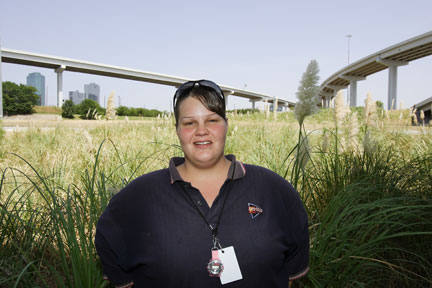 There are other controversies involving the plan. Telling residents that some of their streets won’t be fixed or their parks maintained because they city needs to pay rent for some alcoholics and drug addicts might not be popular. And one minister who works with the homeless says the city has it backward. Officials should make the homeless prove they are changing their lives and have become gainfully employed first and then help them with housing, Neale Mansfield, director of the Feed by Grace ministry says.
There are other controversies involving the plan. Telling residents that some of their streets won’t be fixed or their parks maintained because they city needs to pay rent for some alcoholics and drug addicts might not be popular. And one minister who works with the homeless says the city has it backward. Officials should make the homeless prove they are changing their lives and have become gainfully employed first and then help them with housing, Neale Mansfield, director of the Feed by Grace ministry says.
And one more controversy: Those who qualify for the city-paid housing will not have to pass any drug tests to stay in their apartment.
The argument for the long-range plan is simple: Studies from around the country have shown that by paying apartment rents for the homeless, cities and counties can actually save money in the long run. People with roofs over their heads run up fewer bills at public hospitals, get in less trouble with the police, spend less time in jail, have a better chance at beating their addictions and mental health problems, and are more likely to find work and become taxpaying contributors rather than users of public services.
In short, studies have shown that reactive homeless programs cost more than proactive ones. Of course, it took Fort Worth three years of studying to come up with its proactive plan.
Prior to 1984, the homeless tended to concentrate in downtown Fort Worth, as the Salvation Army had a shelter and services there. But that year, a homeless man was found dead in a church doorway, a victim of hypothermia during an ice storm. The local Presbyterian church decided a bigger shelter was needed and they opened one in the East Lancaster area. But this was not just the reaction of a local church group to the death of a single man. Downtown business leaders – particularly the Bass family with its Sundance Square development project – worked hard to get the homeless out of the downtown area. Instead they were pushed toward the southeast to put a freeway or two between them and downtown.
Over time more agencies moved into the area – the Union Gospel Mission, the Day Resource Center, and the Salvation Army, as well as mental health centers, substance abuse programs, and veterans’ help groups.
The movement of virtually all of the city’s homeless services groups to this three- or four-block area might make it easier to deliver help to the down-and-out, but it has left this Near East Side neighborhood in tatters. About 700 people line up for the mats in the Presbyterian Night Shelter every evening. Hundreds more crash on the sidewalks outside. Those with cars park in empty lots in the area and “camp out” at night. Church groups come to pass out food and supplies, and the crowds of homeless follow the giveaways.
Trash is everywhere. Sidewalks are littered with dirty mattresses and bags of clothing. Drivers on East Lancaster Avenue are often stopped by beggars or just by wandering herds of people crossing from the sunny side of the street to the shady side as the sun moves across the sky. Some homeless people panhandle and scare away customers from local businesses. Police calls here are frequent, though not for violent crimes. They mostly write tickets for trespassing and public urination.
 Business owners and residents of the area have had a testy relationship with the city through the years because of the plan that put virtually all of the city’s homeless in their backyard.
Business owners and residents of the area have had a testy relationship with the city through the years because of the plan that put virtually all of the city’s homeless in their backyard.
“The downtown business interests wanted them out of downtown as Sundance Square was being developed in the mid-’80s,” said Flora Brewer, whose family owned property on Lancaster. Brewer also recently restored an old factory building there and turned it into loft apartments.
“We didn’t like having the homeless just over here, but we understood the reasoning,” she said. “The shelters and the agencies that help the homeless have to be close to each other, because these folks don’t have cars to get around town. But we never saw the city looking to solve this problem. They seem to just look at it as giving them some food and making sure there is some shelter space.”
In October 2005, it started to look as though that attitude might change. The city council created the Mayor’s Advisory Commission on Homelessness.
Prior to development of the plan, Fort Worth was budgeting just $119,000 per year on homeless programs. Many additional services were provided by churches and other nonprofit agencies. But when the commission looked closer, it found that the city’s actual costs were much higher.
According to a study by the city, about 6,000 people in Tarrant County become homeless for some time each year, with most of them living in Fort Worth. About 75 percent of those are short-term homeless, folks who have lost their jobs and need a few months to get back on track. The remaining 25 percent live on the streets for longer periods of time, sometimes for decades.
Public agencies in the county, from the city to John Peter Smith hospital, the commission found, were spending about $12 million a year on services to the homeless, including the delivery of primary healthcare in the JPS emergency room; police, fire, and ambulance calls to shelters; and detoxification programs. Fort Worth officials calculated the city’s share of that annual bill at about $3 million.
Beyond that, 13 faith-based and other nonprofit groups in Tarrant County spent $18 million on homeless services in 2007, drawn from a blending of public (local, state, and federal funding) and private sources. They offered emergency shelters, medical care, mental healthcare services, and housing programs. But only 40 percent of those dollars were spent on strategies that might actually get people off the streets for the long term.
And that was the problem the commission saw. A third of the combined $30 million spent in the county each year was for these proactive programs; the rest was used just to maintain the homeless population.
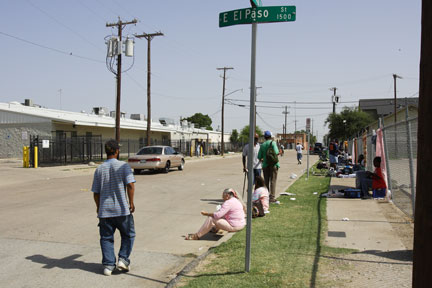 “What we saw in other cities was that, as these housing programs were implemented, costs came down,” said Otis Thornton, the city’s homeless coordinator. “These cities found that as you helped the homeless get proper identification, they could get benefits they were entitled to, like VA and Social Security. They also found that there was a 50-50 chance they would get employment so they could get off the public housing program. We saw this as a way to leverage other funding mechanisms, getting people working, and cutting the costs to the city to maintain the homeless population.”
“What we saw in other cities was that, as these housing programs were implemented, costs came down,” said Otis Thornton, the city’s homeless coordinator. “These cities found that as you helped the homeless get proper identification, they could get benefits they were entitled to, like VA and Social Security. They also found that there was a 50-50 chance they would get employment so they could get off the public housing program. We saw this as a way to leverage other funding mechanisms, getting people working, and cutting the costs to the city to maintain the homeless population.”
The original budget for Directions Home called for $880,000 per year in rent vouchers from the Fort Worth Housing Authority, which is part of the city budget and funded by taxpayers. An additional $1.5 million would be spent on case managers and services to support the clients once they moved in. That money would be administered by the United Way of Tarrant County via contracts with other agencies to provide the services. The rest of the Directions Home budget includes administrative costs, three additional narcotics officers, and social services in homeless court, where street people can avoid jail time on ticket-level misdemeanors issued by completing drug counseling programs, for example.
If the suggested $1 million cut in the Directions Home budget is approved by the council in August, the housing voucher program would lose $326,000 and support services $359,000 in the coming year. In addition, the city staff overseeing the program would be cut by 35 percent, and many of the homeless court programs would be cut as well
James Petrovich, a professor in the University of Texas at Arlington’s School of Social Work, has been hired by the city to study the Directions Home program and to determine the success rate of those moving into housing. His first report on the 47 clients is due in a few months.
“The Fort Worth plan is a really solid one, as they took their time and looked at the best programs around the country,” Petrovich said. “There has been study after study about permanent supportive housing, and when you look at the data, they all show that when you give these people housing and do the follow-up care, you save money in the long run. What works is to put people in housing first and then address their needs next.”
Researchers in Seattle found that chronically homeless individuals with severe alcohol problems were heavy – and costly – users of health and criminal justice services. The 95 individuals in the study used, on average, $4,066 worth of services per month before they were moved into housing. After moving in, their services dropped by an average of $2,540 per month, and the figure continued to decrease month after month.
“I think because this program is in its infancy, it might be prudent to see how things play out a bit before doing budget cuts,” said Petrovich. “It is just good business for the city to end homelessness. There is a moral imperative, but there is also a good deal of good planning involved as well.”
Church leaders and directors of service agencies went to city hall on July 14 to ask the council to rethink the budget cuts. “It would be like enrolling your daughter in the first grade and telling her she’ll be in school through high school,” the Rev. Fritz Ritsch of the St. Stephen Presbyterian Church told council. “But then after she does really well in the first grade, you pull her aside and tell her you’ve decided she’s not going to go to school anymore.
“That’s what could be happening here if this budget is cut,” he said. “We have told the homeless and the people of Fort Worth that we want to work on ending homelessness in this community inside of 10 years. I think we should give it a chance before we start cutting it.”
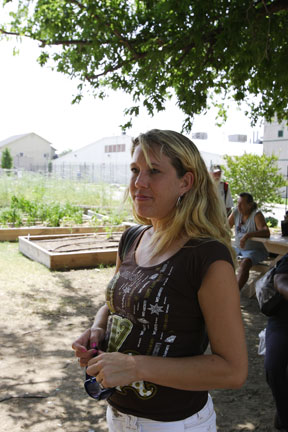 The first group of those who qualified for the Directions Home housing program have been in their apartments for just about a month now. Furniture, kitchen equipment, and cleaning supplies come from charity groups or private donations.
The first group of those who qualified for the Directions Home housing program have been in their apartments for just about a month now. Furniture, kitchen equipment, and cleaning supplies come from charity groups or private donations.
Qualifying for that housing pipeline is a difficult and long process. Agencies have tried to survey as many as of Fort Worth’s homeless as possible. Part of the survey determines how they rate on a “vulnerability index,” measuring who is most at risk for dying on the street.
High-risk persons are defined as those who fit one or more of these criteria: have had three or more emergency room visits in a year, are aged 60 or older, and/or have cirrhosis of the liver, HIV/AIDS, psychiatric or substance abuse problems, or a chronic medical condition. Length of time on the street is also a factor.
So how did Debra Hurley, young and well-spoken, get on the vulnerable list? She has been on the street for a year, has had drug issues with marijuana, and has a nerve problem in her leg. Plus she’s pregnant. Getting her into housing means her baby won’t become another homeless human.
Hurley grew up in a nice neighborhood around Hulen Street and Camp Bowie Boulevard and even attended Arlington Heights High School for a while. But her mom was a drug abuser who beat Debra. School officials notified Child Protective Services workers when they saw bruises and cuts on her arms and legs, and CPS had Debra removed from her mother’s home when she was 14.
For the next five years, Hurley moved among foster homes. She got back with her mother a few years ago, when Debra saw that her mom was trying to clean up her act. They lived in a hotel on her mom’s Social Security income, and Debra got a job at a fast food restaurant.
But things started spiraling out of control again last year. Debra got laid off from her job. A few months later her mom died from an accidental overdose of methadone, Debra says. Bouncing around foster homes had left her with few friends whom she could call on for help, and within weeks she was out in the street.
Of course, every homeless person has a story of bad luck, mostly caused by bad decisions and drug abuse or mental illness. Hurley wouldn’t talk about what part of her problems may have been self-induced, but she does acknowledge how tough it is to get out of this rut.
“It is hard to get a job if you don’t have a home, and you can’t get a home unless you have a job,” she said, sweating in the hot sun. “You can get some day labor, but it is tough for women because most of them are construction jobs. And being pregnant – and I take responsibility for that – makes it even tougher.
“I just feel like I’m a nobody right now,” she said, sighing.
“People who do care out here want a life and want to get it back,” she said. “I need this [housing subsidy] bad. I had no hope. Before I [qualified] for the apartment, I thought I was going to be stuck out here for the rest of my life. I have some hope now, and I am not going to waste it.”
Hurley’s case manager is Sara Trigg, who works with Directions Home on behalf of Helping Restore Ability, a nonprofit organization that provides services for the disabled, and Catholic Charities of Tarrant County. Four of her clients have already moved into their homes, and the two agencies have 36 more on the waiting list.
“There are some problems we have had from the beginning,” Trigg said. “After the city’s housing department identifies who qualifies, we have to go find them. Some are gone. Others take a while to find. Then there is the problem of documentation.”
The city requires that the new housing tenants have identification proving that they are indeed the person who has qualified. So the case manager has to find birth certificates and get verification of Social Security numbers. Gathering that material is key in another way, Thornton said. “Once we identify them, the case manager can see what benefits they have not been receiving [but qualifying for], like Medicare or Medicaid, VA or Social Security check, or disability benefits,” he said. “This is how we are using this program to leverage other money.”
Trigg said the adjustment to having housing could be difficult for some. “We have to aid them in getting employment and education and restoring family relationships,” she said. “This can be stressful for some who have been on the streets a long time.
“Every individual is different,” Trigg said. “Transportation is a big issue, because these people do not have cars. One woman has job training classes she has to get to, and she has to get up at 5:30 in the morning to get to school by eight. I don’t know many people who would do that, but she does that every day.
“We found one man who was leaving his apartment to go eat at the shelter down on Lancaster,” she said. “He was dealing with isolation and boredom and the lack of the friends he had made on the street. But we are working with him in a number of ways – from guidance counseling to getting a job – so he can start getting new relationships.
As for Hurley, Trigg said she is enrolled in a substance abuse program and parenting classes. “She’s had a lot to deal with at a young age, and she does have a lot of maturing to do,” Trigg said. “She doesn’t have a high school diploma, but we will work on her getting a GED. I think she will do well, because she is motivated and willing to learn.”
The business community on the Near East Side obviously supports the city’s homeless plan. Any strategy to reduce the homeless population in their neighborhood would solve a host of ills, removing obstacles to business development, helping stop a slide in property values, and putting less trash on the streets.
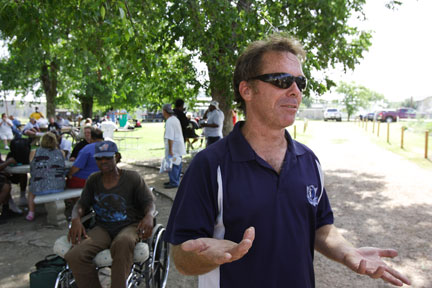 But there also has been a change in mind-set to a certain extent. “We have been around these people for a long time, and we understand the need for moral direction and compassion,” said real estate developer Brewer. She is also now the chief operating officer for Helping Restore Ability and works closely with case managers like Trigg.
But there also has been a change in mind-set to a certain extent. “We have been around these people for a long time, and we understand the need for moral direction and compassion,” said real estate developer Brewer. She is also now the chief operating officer for Helping Restore Ability and works closely with case managers like Trigg.
“What this program is doing is helping to coordinate these agencies in a good way,” she said. “Few of these agencies have ever been on the homeless front line until now. And they didn’t communicate with each other very much to make the most of their services. They are doing that now.”
Chris Watson recently opened his Got You Covered Workwear business on Lancaster, providing uniforms for businesses and their workers. “Everyone was looking at me funny when I said we were going to open the business here, but we like the location, and we realize that a part of the responsibility of everyone in this city is to help these people,” Watson said.
“They aren’t going to go away – not all of them anyway,” he said. “And when I see these people on the street, I just say to myself ‘There but for the grace of God go I.’ “
Watson and other business owners are helping the housing program by rounding up donations of furniture and other accoutrements. “There are so many ways we can help, because getting them settled in a way that allows them to succeed is the major thing this program is about,” he said.
Bob Gallant’s family has been operating the East Side Marble and Granite Co. on Lancaster since the 1950s. He has seen the area change through the years from a vibrant business corridor to a place where the homeless live. Gallant and others in the Near East Side Neighborhood Association are working to restore that part of town through the city’s “urban village” initiative. Like Watson, he is raising money and seeking donations to equip the Directions Home apartments with furniture, dishes, and cleaning equipment like vacuum cleaners.
Will the homeless have a place in a restored part of the inner city? “Those of us who have been down here for a long time do not have a big problem with most of the homeless people themselves,” Watson said. “There are so many misperceptions. The thinking that these people are dangerous is so wrong. They don’t want confrontations. Most of them are just trying to survive in a very difficult environment.”
Watson and others in the area want the city to move the shelters and service agencies off Lancaster itself, maybe a few blocks south. The reasoning is that the street is a major thoroughfare and the movement of so many homeless people through busy traffic is a safety issue.
The Directions Home plan includes building a central homeless facility, sort of a one-stop shopping facility for counseling, food, and shelter. Funding for the facility has not been secured, though the $1.5 billion set aside nationally for homeless programs under the Obama administration’s stimulus package looks like a place to start. Texas would get about $41 million of that money, with Fort Worth earmarked for about $2.7 million.
Watson’s other gripe is about how charities, particularly church groups, come down and pass out food and supplies to the homeless. “I know they are trying to help, but food is not really an issue,” Watson said. “Anyone who wants to eat can get fed down here by the shelters. And when they give them clothing or other things, there are no places to store the stuff, so they end up selling it. And some of them use that money to buy drugs.”
Watson’s description of the food situation seems on target. On a recent hot and sweltering Saturday, one church group was passing out bologna and cheese sandwiches just before dinner time at the Presbyterian Night Shelter. A lot of the sandwiches ended up getting tossed into the street in front of the shelter. But the discarded sandwiches didn’t go completely to waste. Flocks of pigeons descended to pick at the bread.
Neale Mansfield used to come to the East Lancaster neighborhood to buy crack 10 years ago. Now he comes every Saturday to work with the homeless. In 2005, he founded the nonprofit Feed By Grace Ministry, which, he said, “is about empowering the homeless, not enabling them.”
Mansfield, 50, concentrates on job training, but those who come into his program have to show a desire to change their lives. His group shows up in Unity Park at Presidio and Cedar streets every Saturday morning to teach landscaping and other skills. The homeless even help grow their own food in a garden within the park.
For the first six months a person is in the program, the ministry arranges for temporary employment – in construction, for example. If an enrollee succeeds in that venture, Mansfield works to get him or her into steadier full-time employment. That will lead to housing and getting them off the street.
Mansfield is somewhat critical of the church groups that pass out food and clothing. “They come down here thinking they are helping, but they are just making it easier to be homeless,” he said. “Then they go back to the suburbs and feel good about themselves. These people have to realize that we need to work with the homeless to overcome their problems.”
Ben Bozon, 28, student minister at Fort Worth Chapel Creek Fellowship, agrees that some church groups do not think through their aid to the homeless. The Chapel Creek youth group was passing out bottled water on the same day the pigeons were eating the bologna sandwiches.
“We are in favor of any long-term plans that help the homeless, and what Neale is doing is working toward that,” Bozon said. “But I don’t see passing out cold water on a 105-degree day as enabling the homeless.”
Mansfield also has some problems with the Directions Home housing program. His main criticism is the focus on the chronically homeless rather than those who have shown they want to make changes in their lives.
“What we are doing is taking people who are drug addicts or have some mental problems, getting them in government-paid housing, and then getting them government checks to live on,” Mansfield said. “So they become drug addicts who don’t work, with a roof over their heads. I don’t see that as much of a big change in their lives.
“I am not saying the city should not be spending more money on helping the homeless,” he said. “But I think it should be work first, housing later, and not the other way around.”
Mansfield also worries that some case managers are encouraging applicants to ask doctors for drugs to combat mental illness so they can move up higher on the vulnerability index. “I know four people approved for the housing program who did not have mental problems as far as I could tell, and now they have to be on psych meds to get into housing,” he said. “I think some case managers have housing vouchers in their back pocket, and they want to use them quickly.”
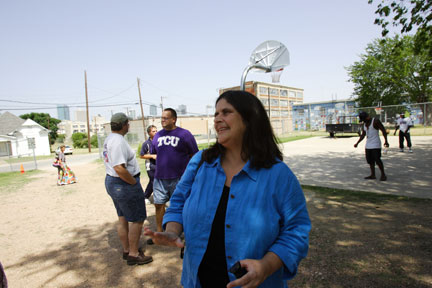 Trigg said she has not heard of any case managers using that tactic. “It is a basic fact that many of the chronically homeless have mental illnesses, and getting treatment for those issues is a part of their recovery,” she said.
Trigg said she has not heard of any case managers using that tactic. “It is a basic fact that many of the chronically homeless have mental illnesses, and getting treatment for those issues is a part of their recovery,” she said.
Thornton said the newness of the program guarantees that there will be mistakes to work through. That’s why the UTA social work school will constantly be monitoring the program. “We are going to find out very quickly who is successful and who is not,” he said. “It is all about being transparent and tweaking the program as we go through. But our initial goal is to get the most vulnerable – those in danger of dying on the streets – into homes first, then work our way down the list.
“It will be interesting to see the discussion of budget cuts in the coming weeks,” he said. “If we cut the budget by a million, we will be getting fewer and fewer people out of homelessness. I don’t know if the city council or the people of Fort Worth want that.”
Mansfield is also concerned that putting the homeless in neighborhoods that have large drug sales might cause bigger drug problems. But the city has no plans to have drug testing as a part of the housing program. The new tenants will be just like any other renter: Violate the apartment lease agreement (by making too much noise, for example), and the management of the apartment can kick you out.
“The more rules and restrictions you pile on, the less effective [the housing program] is,” said Thornton. “The studies have shown that drug use goes down substantially among the homeless put in housing, as the program brings about more therapeutic effects.”
Tammi Donohew, 34, has been homeless for four years because of her crack addiction. She quit last year, began getting medicine for her depression and bipolar disorder, and moved into a one-bedroom apartment in the Woodhaven area last week. She has no bed or couch just yet, “but I am a year clean now, take my medications every day, and really feel that my life is changing. I am going to work very hard at getting a job.”
“I think that would be awful if they cut this program,” Donohew said. “A lot of homeless people are working to turn their lives around. If I didn’t have this program, I would still be in the shelter. It gives us a chance to get into a new life.”
At the July 14 city council meeting, 68 people showed up to lobby against cuts in the homeless program. In all, speakers consumed 90 minutes of the meeting with their comments. On Aug. 4, the homeless commission will make another presentation on the Directions Home program, during the informal briefing session that precedes that day’s council meeting.
The Rev. Brooks Harrington chairs the homeless commission. Harrington is an associate minister for the First United Methodist Church of Fort Worth, but he is also an attorney. Harrington coordinates the church’s Methodist Justice Ministry, which gives free legal advice to the poor, including some cases in which homeless people are charging that they were cheated out of pay by some day labor businesses.
At last week’s monthly meeting of the commission, Harrington laid out the strategy to keep the program intact. “There is a feeling on council that God’s name is involved now, and doing this work to help the homeless is a moral imperative,” he said.
City Council member Sal Espino agrees. “We as a council have to balance the budget, and part of that is making sacrifices,” he said. “But not everything is simply about dollars and cents. Sometimes we must think about moral issues for the community, and I think this homeless program is one of those we should be thinking about. We’ve made a lot of progress in such a short time, and I would hate to see that progress stifled.”
Mayor Mike Moncrief may wield the biggest influence on whether the proposed deep cuts in the homeless program get made. As has been his long practice, Moncrief wouldn’t comment to Fort Worth Weekly for this story. But he recently said at a pre-council meeting that he was in favor of the $1 million cut in funding, which caused members of the homeless commission he created to rise up and voice their opinions.
“When I was appointed as chair of this commission, I did not think I would become something of a lobbyist,” Harrington told the commission last week. He said that seven of the eight city council members have told him they are leaning toward keeping the program fully funded. Harrington did not say if the mayor’s stance had changed.
“My sense is that the mayor thought this was his program,” Harrington said. “He thought that the $1 million cut was a way to save the program. But I get the sense that city council has adopted this program, and they like it very much.
“Council wants to make it work, so the citizens of this city need to urge them to do the right thing,” Harrington said. “This budget cut is not a done deal.”











